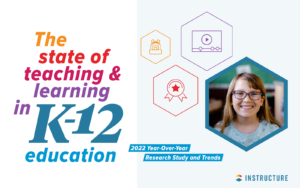Differentiating Family Engagement

By: Amanda Winkelsas
Dr. Rudy Crew said, “We need to create a wider pathway and a more expansive menu of opportunities for parents. Currently, there is a very narrow pathway for the parent-school relationship, which does not invite all different kinds of conversations that are needed and does not ask parents to operate in any actionable way with schools…If we want parents to take action, we need to help build their knowledge about education and the importance of family involvement.” As a teacher, I tend to agree. The model that’s long existed is in many ways outdated. Participation in PTA meetings or parent-teacher conferences, chaperoning the occasional field trip or attending a school performance or science fair–that’s been the fairly standard menu of options for family engagement.
While the previous model likely always marginalized some parents and families, what we now understand about modern families is that their needs are varied. Families are comprised differently and have an array of schedules and demands. What we’ve also come closer to recognizing is that physical presence at specific events cannot be the only indicator of family engagement. With technology tools at our disposal, we now have a greater number of tools that can be leveraged to cultivate flexible engagement!
Why then, has family engagement remained such a challenge? SEDL and the US Department of Education published a framework in 2013 that began to address the challenge. Essentially, the consortium argued that mandates around school and family engagement are, “often predicated on a fundamental assumption: that the educators and families charged with developing effective partnerships between home and school already possess the requisite skills, knowledge, confidence, and belief systems–in other words, the collective capacity–to successfully implement and sustain these important home-school relationships. Unfortunately, this assumption is deeply flawed. Principals and teachers receive little training for engaging families and report feeling underprepared, despite valuing relationships with families.” While we work toward building more effective models and preparing educators to enact those models, what can we do in our own schools and classrooms?
Below are a few initial steps to differentiating family engagement:
- Survey families about their preferred modes (paper copies, class website, phone calls, or communication apps such as Remind, Bloomz, or TalkingPoints–which allows for access in home languages) and times for communication (and if parents don’t reply to paper or online surveys, perhaps integrate this into the beginning-of-the-year phone calls).
- Interview families about their hopes and dreams for their children as well as the forms of learning that are cultivated more regularly at home. What kinds of skills and tasks are important at home? What are the special areas of expertise that families might be willing or able to share? What activities at home are requiring students to read or work with numbers? What special jobs does a child have? What’s most important to know in order to support the child through the year?
- Use an array of communication tools for regular updates as well as activities such as family conferences. Skype, FaceTime, or Zoom in a family member if they’re not able to make the meeting in person. Consider altering the format, too, with student-led conferences where students and families are more likely to take an active role.
- Record and share, via secure apps like Flipgrid, classroom victories and successes. Allow for families to see into the classroom, but also record and share back, if possible. And then, ensure that there are multiple means of accessing those victories and successes. (Refer back to the preferred modes as not all families may be able to utilize apps.)
- Consider inviting specific parents or families to committees or groups. Rather than always seeking volunteers and sometimes risking the creation of echo chambers or groups comprised of the same people over and over, take the time to personally invite family members who might then be more encouraged to participate. (It’s impossible to know all the experiences that families have had with schools. Sometimes a parent’s own negative experience with school might make them feel uneasy about volunteering, but a personal invitation might open a doorway for new experiences!)
- Seek ways to build relationships between and among families. Ask families to identify and share skills or offer to teach other parents. Create buddy systems or smaller groups so that families have others they can turn to with questions or struggles. Ultimately, building and empowering those networks will mean more support for everyone!
- Connect with other teachers at other schools to learn what they’re doing to foster more sustained and varied family engagement!
We’ve got to grow the menu and recognize that there are a million ways for families to be engaged. As teachers, we need to learn about families and then leverage the available resources in order to build more varied opportunities. Finally, we must recognize that just because it may not be visible to teachers doesn’t mean that families aren’t meaningfully engaged in their child’s learning!
For more, see:
- Creating a Culture of Collaborative Family Engagement
- Promoting Family Engagement: 5 Ways to Foster Meaningful Connection
- Family Playlists: A New Approach to Family Engagement
Stay in-the-know with innovations in learning by signing up for the weekly Smart Update.








0 Comments
Leave a Comment
Your email address will not be published. All fields are required.